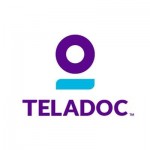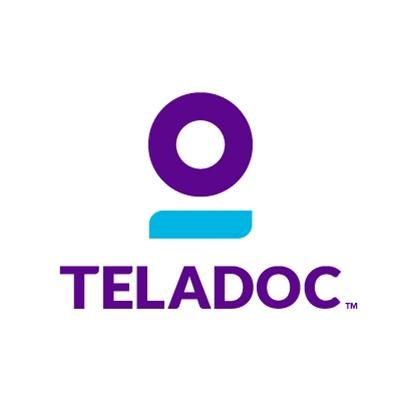Category: independent consumer stock research
Peloton Interactive: Riding High on Consumer Spending
 Peloton Interactive (NASDAQ: PTON), a high-end fitness products company, is a relatively recent addition to our Battle Road IPO Review Consumer sector coverage. Founded in 2012 and based in New York City, Peloton is expected to record revenue of $1.48 billion in its fiscal year ending June 30th 2020, along with a loss per share of $1.29. This compares to revenue of $915 million in fiscal year 2019, during which the company recorded an operating loss of $113 million, excluding depreciation expense.
Peloton Interactive (NASDAQ: PTON), a high-end fitness products company, is a relatively recent addition to our Battle Road IPO Review Consumer sector coverage. Founded in 2012 and based in New York City, Peloton is expected to record revenue of $1.48 billion in its fiscal year ending June 30th 2020, along with a loss per share of $1.29. This compares to revenue of $915 million in fiscal year 2019, during which the company recorded an operating loss of $113 million, excluding depreciation expense.
Peloton announced the pricing of its 40 million Class A share IPO on September 25th. The deal was priced at $29 per share, and was led by a remarkably large number of underwriters—21 in total—reflecting in part the recent IPO drought. Peloton also announced the concurrent sale of 3.5 million additional shares of its Class A common stock in a private placement to entities affiliated with TCV, an existing shareholder. Following the IPO, roughly 45 million Class A and 236 million Class B common shares outstanding for a total of 281 million shares outstanding, with Class B shares holding 99 percent of the voting power. At a recent share price of $28, Peloton Interactive possesses a market cap of roughly $7.9 billion.
Peloton Interactive positions itself as an interactive fitness platform at the “nexus of fitness, technology and media,” which creates, in its own words, “engaging to the point of addictive” programming for customers. PTON is primarily a high-end exercise bike and treadmill company, with approximately 69 percent of sales coming from connected products, with most of the remaining 31 percent from subscriptions associated with its product sales. Over the last five years, the company has sold over 580,000 exercise bike and treadmills, with about 97 percent of the total sold in the U.S. Roughly 50 percent of revenue comes from sales from its website onepeloton.com. Other channels include showrooms. The company claims over 1.4 million member subscribers, who completed over 58 million workouts in fiscal 2019.
To peruse Peloton’s product offerings on its company website is to realize just how strong today’s consumer economy has become. Pricing for Peloton’s exercise bike begins at $2,245, with a one year limited warranty, and pricing for its tread machine begins at $4,245, with a one year limited warranty. In the most recent quarter ended September 30th, Peloton reported revenue of $228 million, a 104 percent increase over the prior year, along with a gross margin of 46 percent, flat with the prior year. The company’s operating loss was $51 million, as compared to an operating loss of $56 million in the prior year. Post-IPO Peloton has a strong balance sheet, with roughly $1.5 billion in cash, or $5.25 in cash per share, and no debt, though we do note that the company is currently not profitable.
Tags: IPO Research, independent research on IPOs, independent stock research; independent research on Peloton Interactive, independent research on Consumer stocks; independent research on Consumer IPOs.
Teladoc (NYSE: TDOC)
 Teladoc (NYSE: TDOC), based in Dallas, Texas, is a recent addition to our Battle Road IPO Review Business Services sector coverage. Founded in 2002, Teladoc provides healthcare services, which may be accessed via the phone, or through the web via an internet connected device. Consensus estimates call for revenue of $75 million and a Loss per Share of $1.58 in 2015, followed by revenue of $118 million and a Loss per Share of $1.02 in 2016.
Teladoc (NYSE: TDOC), based in Dallas, Texas, is a recent addition to our Battle Road IPO Review Business Services sector coverage. Founded in 2002, Teladoc provides healthcare services, which may be accessed via the phone, or through the web via an internet connected device. Consensus estimates call for revenue of $75 million and a Loss per Share of $1.58 in 2015, followed by revenue of $118 million and a Loss per Share of $1.02 in 2016.
Teladoc priced its 8.3 million share IPO at $19 per share on the NASDAQ on June 30, 2015 for first trade the following day. All shares were offered by the company. Subsequently the underwriters exercised their over-allotment of 1.24 million shares for a total offering of 9.5 million shares, enabling the company to raise about $170 million. The deal was led by J.P. Morgan Securities, Deutsche Bank Securities, William Blair, Wells Fargo Securities, and SunTrust Robinson Humphrey. At a recent share price of $21, Teladoc’s market cap is roughly $800 million.
Teladoc is one of a number of growing healthcare services providers catering to the on-the-go professional, as well as those that wish to avoid fees and expenses incurred by visiting a doctor. Teladoc members pay a $40 fee for a “virtual visit” with a physician or licensed healthcare provider. The visit may be a video collaboration, telephone consultation, or email query. The fee is paid directly by the member or through their healthcare service provider.
The company provides phone based counseling on a range of conditions, disorders, and maladies, including anxiety and smoking cessation treatments, as well as diagnoses of skin conditions and acute infections. Teladoc connects 12 million subscribers to over 1,500 board-certified doctors and health professionals, and claims a median response time of 10 minutes to a user query. During the second quarter of 2015, the company recorded 125,322 patient “visits” versus 61,379 the year before. Teladoc has grown both organically and through acquisitions, including four executed in the last two years. Teladoc’s top ten customers accounted for 28 percent of revenue in 2014, down from 41 percent in 2013. Through the first six months of 2015, the top ten customers accounted for less than 25 percent of revenue.
A number of telemedicine services providers have cropped up in recent years, including privately-held MDLive, Doctor on Demand, and American Well. The segment has been gaining recognition and endorsement from several leading healthcare services providers, including Anthem, Aetna, Cigna, UnitedHealth Group, and others. CVS is currently working with Teladoc, as well as Doctor on Demand and American Well.
Despite its alluring value proposition, Teladoc’s lack of profitability is disconcerting. During the third quarter of 2015, Teladoc recorded sales growth of 83 percent, reaching $20 million, with subscriptions and access fees accounting for 85 percent of sales, and visit fees the remaining 15 percent. The company’s operating loss widened from $3.9 million a year ago to $12.6 million in the most recent period, a disconcerting sign that the company is failing to make progress toward profitability.


